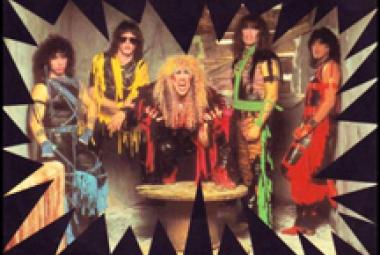The Village Voice is a free weekly 17” by 11” format newspaper and news and features website in New York City that features investigative articles, analysis of current affairs and culture, arts and music coverage, and events listings for New York City. It is also distributed throughout the United States on a pay basis. It was the first of the urban tabloid-format newspapers that came to be known as alternative weeklies, and as such is the oldest and largest newspaper of its kind in the United States. (More from Wikipedia)
As best I can recall, the above albums were the first two that I acquired in the Pebbles series that has filled my life with great, unknown 1960’s garage rock and psychedelic rock for more than 30 years. These LP’s, Pebbles, Volume 9 and Pebbles, Volume 10 were the last two albums in the first group of 10 that was released in 1979-1980, purportedly by BFD Records of Kookaburra, Australia. Actually, the series was masterminded by Greg Shaw, founder of Bomp! Records in North Hollywood.
Why he came up with the Australian connection is unknown to me, but I remember reading a review decades ago in the Village Voice of an album by the Lime Spiders, an Australian rock band that started out at least as a psychedelic-revival band. The article mentioned that interest in 1960’s American garage rock started in Australia; and looking back, I wonder whether that was for real, or whether the writer was just fooled by the supposed origin of the first Pebbles albums.
(July 2013)
* * *
I wrote the above tribute to Dr. Crow on July 30, 2013, not learning until later that morning that Deviants frontman Mick Farren had passed away three days earlier. Besides his amazing music that is not like anyone else’s – that goes double for his singing voice – Mick Farren regularly wrote articles that I would see in the Village Voice and other places, published numerous science fiction novels, and was a respected rock critic and music historian.
When Suzy Shaw of Bomp! Records determined to write an appreciation of the ground-breaking career and life of her former husband and long-time business partner Greg Shaw (shortly after his untimely death in 2004), Mick Farren was brought in as the co-author of the resulting hardbound book Bomp! / Saving the World One Record at a Time.
(August 2013)
* * *
By the end of the 1970’s, Mick Farren had moved to New York and began writing for the Village Voice. I was taking a mailorder subscription to the iconoclastic weekly in the early 1980’s and saw several of his articles. The first one that I remember mused on why the British had such bad dental hygiene and featured a “quiz” showing photos of rotten teeth that could be matched to a list of the English celebrities that had them. He later moved to Los Angeles and began writing for the LA Weekly.
(March 2014/1)
* * *
There was a noticeable dip in the ratings given by rock critics of Bob Dylan’s Christian recordings. That was not true so much for Slow Train Coming – Robert Christgau of the Village Voice gave the album a B+ and wrote: “The lyrics are indifferently crafted. Nevertheless, this is his best album since Blood on the Tracks. The singing is passionate and detailed.”
(August 2014)
* * *
Unfortunately I cannot find anything by this particular Thomas Anderson on YouTube. I guess it is true what Village Voice has said of him: “Thomas Anderson is clearly the greatest unknown songwriter on the planet.”
(November 2014)
* * *
Kim Fowley’s own albums are an uneven lot to say the least, though this appears to be intentional to a considerable extent. His third album, Outrageous (1968) is the only one of his albums to (barely) crack the Billboard Top 200 Albums charts. Village Voice rockcrit Robert Christgau gave Outrageous his second-lowest rating (E) and said: “I don’t understand how he continues to earn a living, but he does.”
(January 2015/1)
* * *
When thinking about Black Russian, I am reminded of a review of one of Sade’s albums in the Village Voice (maybe Promise) that I have been unable to find online. The reviewer noted that the album sounds like music that you have heard before, but you actually haven’t. I can imagine that one or two casual listens to Black Russian could lead to the opinions given above – particularly if one is predisposed to dissing anything that even hints of disco – but to these ears, this music represents brilliant songmaking that combines an appreciation of older R&B music with what was happening in the modern scene. It might be my imagination, but sonically, Black Russian seems louder than most of the other albums that I have been playing recently.
(April 2015/1)
* * *
* * *















